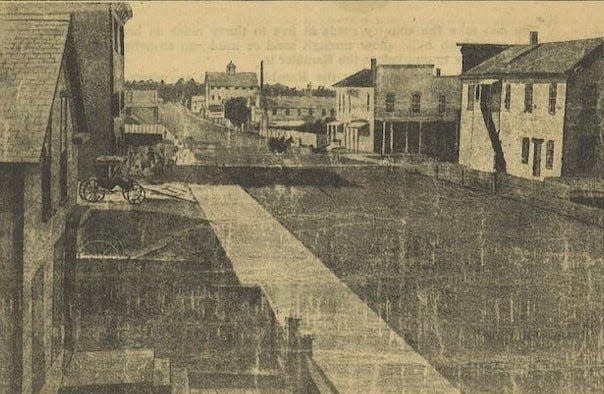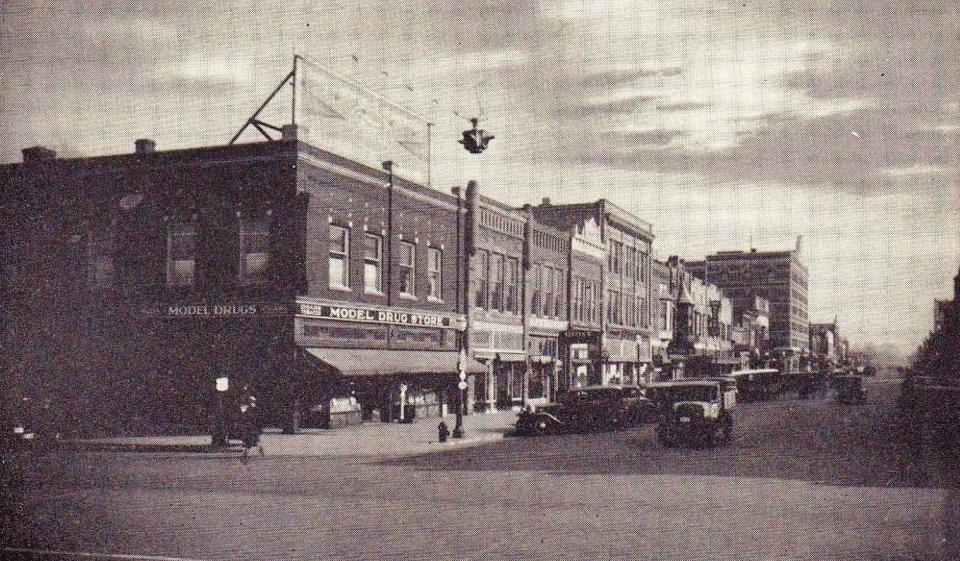Steve VanderVeen: The Post Building was a retail magnet in Holland
The Post Building has always been a retail magnet.
In 1848, Henry and Anna Post — and Henry's youngest brother Hoyt — arrived from Vermont via Allegan at the behest of Albertus Van Raalte to help the newly arrived Dutch immigrants build an economy.
With Van Raalte, the Posts took advantage of West Michigan’s wooded wilderness by starting a potash, soap, and baking soda factory named Post and Co.
While living on the northwest corner of Eighth Street and River Avenue, where the Tower Clock building is today, the Posts temporarily housed immigrants. They also opened a store on the northeast corner.

To supply their store, Hoyt made use of Holland’s other natural advantage — water — to transport merchandise from Allegan, Chicago, Grand Haven, Richmond and Singapore. Here's what historian Robert Swierenga said about the business:
“At Post and Co, one could purchase familiar imported items like tea ... and dry goods like nails, cotton and calico. By 1852, medicines on hand included quinine to fight malaria and sulfate morphine, a pain-relieving narcotic. In regard to medicine and drugs, Post had no qualms selling any item that promised to put hair on your head or prevent stomach worms, so long as he saw profit in it.
"But Post had not befriended the Hollanders to abuse them; he was in business for the long haul. ... Post and Co. had to compete with specialty stores ... including the bakery of Johannes ‘Jan’ Visser and the butter creamery of Klass and William J. Mulder.
"By 1859, it was not uncommon for Pieter Pfanstiehl’s general store to take in … 300-400 pounds of fresh-made butter per day. His cool storage room sometimes held twice that amount.”
In 1854, Henry and Anna had a son named John. In 1861, Anna purchased property at 80 W 11th St. — where the Posts built a home. Then came the Great Fire of 1871, changing the face of Holland forever.
In 1887, Hoyt erected the Post Building, present-day home of the Apothecary Gift Shop. He also constructed a home at 70 W. 13th St.
In 1885, O.E. Yates and P.W. Kane operated a drug store in half of the Post Building at 35 W. Eighth St. In 1890, Sue A. Martin, Holland’s first known female druggist, and Albert J. Huizenga took over the drug store. Martin bought out Huizenga in 1899.
To supplement her work as a druggist, Martin sold books, cigars, periodicals and stationery. In the summer months, she also offered “the best ice cream sodas in the city in season.” Meanwhile, Peter Steketee’s grocery store occupied the rear of the building with access from River Avenue, and his brother Bastian Steketee a dry goods store in the other half of the building at 33 W. Eighth St.
In 1888, Bastian bought Peter's business. It flourished into the 1920s.
Subscribe: Get unlimited access to our local coverage
In 1906, G.T. Haan, after operating a drug store on the corner of Michigan Street and Monroe Avenue in Grand Rapids, acquired the Post Building.
Haan renamed the drug store the Model Drug Store. One of his big sellers was “old stock” cigars, which he sold in bundles of five for 25 cents, instead of the going rate of 10-15 cents per cigar. According to Swierenga:
“In the first six months of 1921, he sold half a million cigars. On one Saturday, he sold 9,400 cigars of one brand. Although not as fresh as newly rolled cigars, Hollanders jumped at the bargain."
The March 8, 1923, edition of the Holland City News claimed “The Model Drug Store is one of the best-known retail business places in Holland” and “particularly well known to resorters.”

In 1923, two of G.T. Haan’s employees, Henry Wilson and James Yonkman, purchased the Model Drug Store. That same year, Jake Haan partnered with Peter Houseman of Grand Rapids to move Haan’s pharmacy from 6 E. Eighth St. to 194 River Ave. (present-day home to Reader's World).
They spent $6,000 refurbishing their establishment. The Holland City News claimed Mr. Haan bought the "most beautiful soda fountain in Ottawa County." But then, because River Avenue and Eighth Streets were main thoroughfares, both businesses soon hosted unsightly billboards on their roofs.
We'll learn more about Post Building history next week.
— Steve VanderVeen is a resident of Holland. You may reach him at skvveen@gmail.com. His book, "The Holland Area's First Entrepreneurs," is available at Reader’s World.
This article originally appeared on The Holland Sentinel: Holland History: The Post Building was a retail magnet

